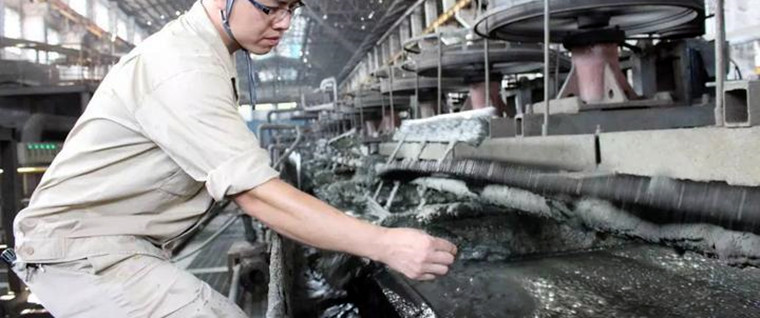The sodium carboxymethyl cellulose used in mineral processing has specific requirements for viscosity, which are mainly reflected in the following aspects:
1. Meeting the Requirements for the Fluidity of the Ore Slurry
- During the mineral processing, the ore slurry needs to have an appropriate fluidity for operations such as stirring, transporting, and flotation. The viscosity of sodium carboxymethyl cellulose affects the rheological properties of the ore slurry.
- If the viscosity is too low, the ore slurry may be too thin, resulting in a too fast sedimentation speed of mineral particles, which is not conducive to the sufficient contact between minerals and reagents and the flotation separation. For example, in some flotation processes, a low viscosity may cause the bubbles to be unable to effectively carry the mineral particles to float up.
- If the viscosity is too high, the ore slurry will become too viscous, increasing the difficulty of stirring and transporting, and may even cause equipment blockage. At the same time, a too high viscosity will also affect the dispersion effect of reagents in the ore slurry and reduce the mineral processing efficiency.
2. Adjusting According to the Mineral Processing Technology
- Different mineral processing technologies have different requirements for the viscosity of sodium carboxymethyl cellulose.
- For example, in the gravity separation process, generally, the ore slurry needs to have a relatively low viscosity to ensure that the mineral particles can be successfully stratified according to their density differences. In the flotation process, depending on the properties of minerals and flotation conditions, a moderate viscosity may be required to maintain the stability of bubbles and the attachment effect between mineral particles and bubbles.
- For some special mineral processing methods, such as magnetic separation or electrostatic separation, although sodium carboxymethyl cellulose mainly plays a role in dispersing and stabilizing the ore slurry, the viscosity still needs to be controlled within an appropriate range to avoid interfering with the separation process.
3. Adapting to Different Ore Properties
- The properties of ores, such as particle size, mineral composition, and surface properties, also affect the requirements for the viscosity of sodium carboxymethyl cellulose.
- For ores with finer particle sizes, a higher viscosity of sodium carboxymethyl cellulose may be required to prevent the agglomeration of mineral particles and ensure the uniformity of the ore slurry. Conversely, ores with larger particle sizes may have relatively lower requirements for viscosity.
- If the ore contains more clay minerals or other components that easily cause the ore slurry to be viscous, it may be necessary to adjust the viscosity of sodium carboxymethyl cellulose or choose a product with special properties to balance the viscosity of the ore slurry to achieve the best mineral processing effect.
4. Considering the Influence of Temperature and Concentration
- Temperature and the concentration of sodium carboxymethyl cellulose have a significant impact on its viscosity.
- During the mineral processing, the temperature of the ore slurry may change due to process operations or environmental factors. As the temperature rises, the viscosity of sodium carboxymethyl cellulose usually decreases. Therefore, when choosing sodium carboxymethyl cellulose, it is necessary to consider its viscosity characteristics at different temperatures to ensure that an appropriate viscosity can be maintained under actual mineral processing conditions.
- Similarly, the concentration of sodium carboxymethyl cellulose in the ore slurry also affects the viscosity. Generally, the higher the concentration, the greater the viscosity. However, an overly high concentration will not only increase costs but may also cause some of the problems mentioned above, such as the ore slurry being too viscous. Therefore, it is necessary to determine an appropriate concentration of sodium carboxymethyl cellulose and the corresponding viscosity range according to specific mineral processing requirements.
